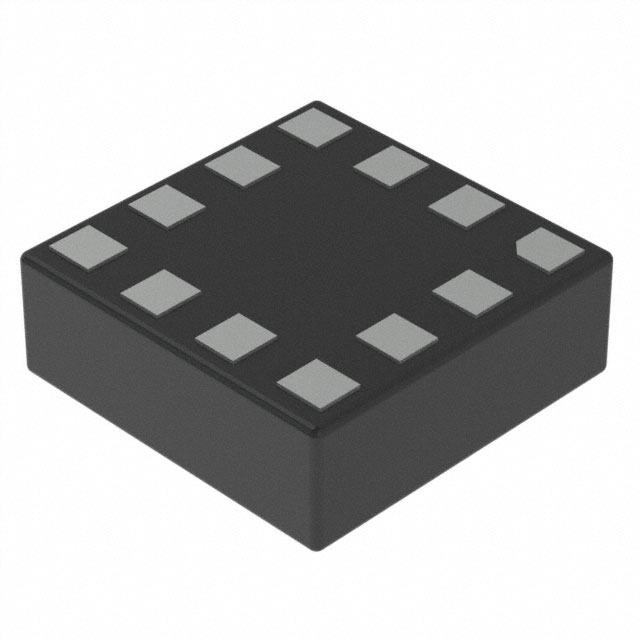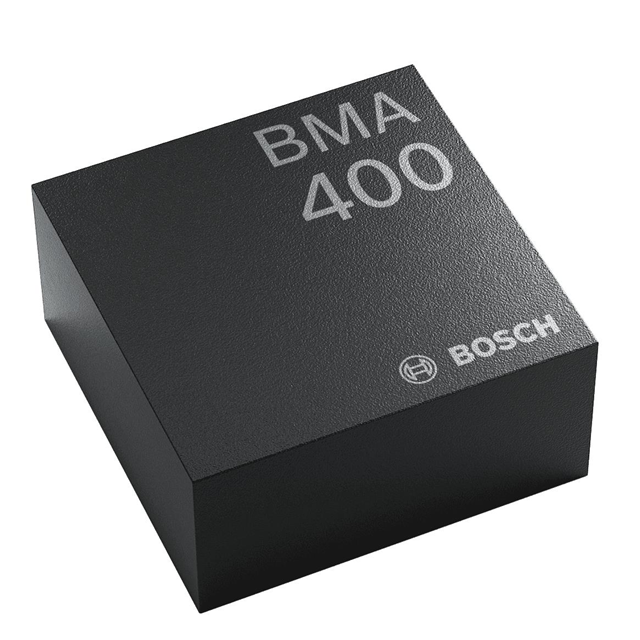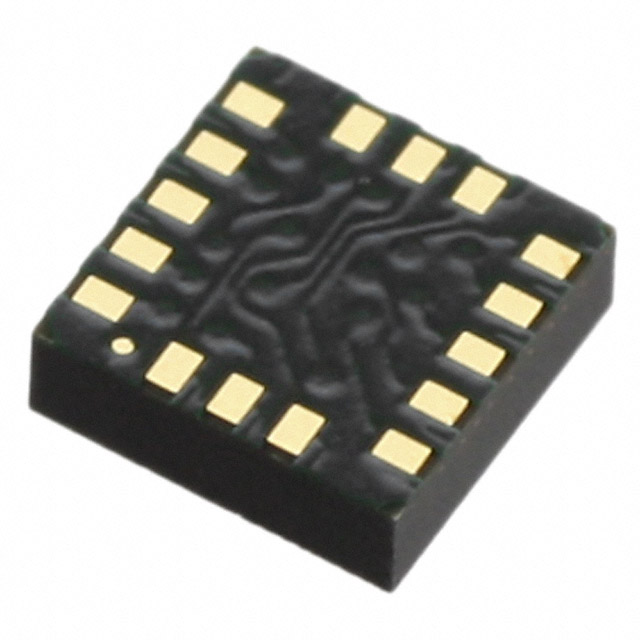

What is an Accelerometer? & How it Works
Catalog
How does an accelerometer work?Types of AccelerometersWhat Do Accelerometers Measure?Accelerometer Sensor Uses (Accelerometer Sensor Applications)Structure Monitoring Using Accelerometer SensorsKey Applications of AccelerometersAccelerometer Sensors vs. GyroscopesEpson's Accelerometer SensorsAccelerometer Sensors vs. Vibration SensorsAccelerometer Installation and MountingRelated ArticlesAn accelerometer is a device that measures the vibration or acceleration of motion in a structure. When something vibrates or changes its motion (acceleration), the force from that causes a mass inside the device to "squeeze" a piezoelectric material. This squeezing creates an electrical charge, and the amount of charge is directly related to the force applied. Since the mass is constant, the charge also corresponds to the acceleration. These sensors are used in all sorts of devices, from space stations to handheld gadgets. In fact, you probably already have something with an accelerometer, like your smartphone. It helps the phone sense which way it’s moving, and that’s why the display turns on when you flip it. In industrial settings, accelerometers help engineers check a machine's stability and detect any unwanted forces or vibrations.

What is an Accelerometer
How does an accelerometer work?
An accelerometer works using an electromechanical sensor designed to measure both static and dynamic acceleration. Static acceleration is the constant force on a body, like gravity or friction. These forces are pretty steady and predictable—gravity, for instance, pulls at a constant 9.8 m/s² almost everywhere on Earth.
Dynamic acceleration, however, is more unpredictable, like vibrations or shocks. A car crash is a great example. In this case, the acceleration changes suddenly. The idea behind accelerometers is that they can detect these changes and turn them into measurable data, usually electrical signals.
Types of Accelerometers
There are several types of accelerometers, each working in its own way with its own benefits:
Piezoelectric Accelerometers
This type of accelerometer works by generating an electrical signal when it detects sudden acceleration. Inside, there’s a sensing crystal attached to a weight. When the sensor accelerates, the weight pushes on the crystal, and the crystal converts that force into an electrical signal. These types are especially good at measuring shocks and vibrations.
Piezoresistance Accelerometers
A piezoresistance - or piezoresistive - accelerometer is a type of accelerometer that works by varying their resistance based on the acceleration they experience. The change in acceleration can be measured to understand the rate of acceleration experienced by the sensor. Piezoresistive accelerometers are less sensitive than piezoelectric accelerometers, as they are not best at measuring low-frequency impacts. However, they work best at high amplitudes and find their application in vehicle crash testing and weapons testing.
Capacitive Accelerometers
Capacitive sensors work by changing their capacitance based on the acceleration they experience. Their construction involves two capacitive plates and a diaphragm. As the sensor experiences acceleration, the diaphragm moves and changes the distance between the capacitive plates. This results in the capacitance of the sensor to change, and this change in capacitance can be measured and translated to the rate of acceleration on the sensor. Capacitive MEMS (microelectromechanical system) accelerometers are used in most smartphones today.
Triaxial Accelerometers
A triaxial accelerometer is a type of accelerometer that can measure acceleration in three orthogonal directions (or the three perpendicular planes – X, Y, and Z). This feature enables triaxial accelerometers to measure all the vibration components affecting the object. A triaxial accelerometer houses three sensing elements, oriented perpendicular to each other. They find their use in measuring building vibrations, turbines, and high-speed machinery.
What Do Accelerometers Measure?
Accelerometers are devices that measure the proper acceleration of an object. Proper acceleration is the rate at which an object's velocity changes, relative to an observer in free fall (essentially, in an inertial frame of reference). When an object goes from being stationary to moving, or changes direction or speed, the accelerometer detects that acceleration.
Common uses for accelerometers include things like rotating screens in smartphones, detecting collisions in cars, and monitoring vibrations in structures. Specifically, accelerometers can detect:
Accelerometer Sensor Uses (Accelerometer Sensor Applications)
Earthquake Measurement Using Accelerometer Sensors
Accelerometers play a big role in measuring earthquakes and monitoring seismic activity. Here’s how they’re used:
Seismic Measurement:
- They detect acceleration when an earthquake happens, picking up the vibrations from seismic waves.
- 3-axis accelerometers measure acceleration along the XYZ axes, giving detailed info about the seismic motion.
Building Monitoring:
Accelerometers monitor vibrations and shifts in buildings caused by earthquakes. They provide sensitive and accurate data, helping building monitoring systems assess the structural integrity of buildings.
Disaster Preparedness:
Accelerometers are also built into disaster planning systems to ensure the right responses during earthquakes.
Structure Monitoring Using Accelerometer Sensors
Along with traditional methods like visual inspections and tapping tests, accelerometer-based monitoring has become more popular in recent years.
Mechanism of Structural Monitoring Using Accelerometers
When accelerometers are installed on structures, they detect vibrations and impacts the structure experiences. These sensors then convert the data into electrical signals, which can be used to analyze the structure’s condition.
Key Applications of Accelerometers
Accelerometers find their purpose in many industrial, manufacturing, commercial, and laboratory applications. Digital Devices: Accelerometers in smartphones, digital cameras, and other mobile devices are responsible for rotating the display based on the orientation you hold it.
Vehicles: The invention of airbags has saved millions of lives. Accelerometers are used to trigger airbags – sensors send a signal when they experience a sudden shock. Drones: Accelerometers help drones stabilize their orientation midflight. Rotating Machinery: Accelerometers used in rotating machines detect undulating vibrations. Industrial Platforms: Industrial accelerometers are used to measure platform stability or tilt. Vibration Monitoring: Machines that move generate vibrations, and these vibrations can be harmful to the machines if left to amplify without supervision. Accelerometers are useful in monitoring vibrations and are increasingly used in locations like industrial plants and turbines.
Accelerometer Sensors vs. Gyroscopes
Accelerometers and gyroscopes are both used to detect motion, but they measure different things.
Accelerometers
Accelerometers measure the linear acceleration of an object. They detect changes in speed or direction, whether the object is stationary or moving. Specifically, they can sense:
- Tilt
- Vibration
- Impact
- Gyroscopes
Gyroscopes, on the other hand, measure the rotational speed of an object. Also called "angular velocity sensors," they track how much the rotation angle changes over time. This lets them sense things like:
- Rotation direction
- Rotation angle
- Vibration
They’re commonly used for:
- Rotational vibration detection
- Compensating for hand tremors
- Attitude control
In short, the key difference is what they measure. Accelerometers focus on linear acceleration, while gyroscopes measure rotational speed.
Epson's Accelerometer Sensors
Overview and Features of Epson's Accelerometer Sensors
Epson’s accelerometers are high-performance sensing devices that offer several key features:
Crystal-based Acceleration Sensing Element
Epson uses quartz crystals to form a dual-tone oscillator and cantilever inside the sensor. This design eliminates differences in thermal expansion between components, reducing sensitivity changes caused by temperature fluctuations. This makes their sensors more stable and less affected by temperature changes.
Digital Approach
Epson’s accelerometers use a digital measurement approach, removing the need for analog circuits. With a proprietary digital frequency detection method, these sensors achieve precise and wide-bandwidth acceleration detection.
Sensor Control from a PC
The sensors output digital data, making it easy to process the data in a PC environment. You can connect and build systems in various programming environments using standard I/F boards or units.
Low Noise, High Resolution, and Stability
Epson’s accelerometers offer excellent noise performance below 1µG/rtHz, ensuring high-precision data and great shock resistance, even in challenging conditions.
Slim System Configuration
The compact size of Epson’s accelerometers means there’s no need for specialized PLC A/D units, which helps lower overall system costs.
Waterproof and Dustproof Units
Epson also offers waterproof models with CAN interfaces, making them suitable for harsh environmental conditions.
Epson’s Accelerometer Sensors Technology
Epson’s accelerometers use a frequency-change structure based on their quartz microfabrication technology. Unlike many traditional accelerometers that rely on Micro Electro Mechanical Systems (MEMS), Epson has developed sensors using their proprietary quartz processing technology.
Mechanism of Quartz Microfabrication Technology
Epson’s sensors use tiny structures called crystal oscillators and cantilevers inside the sensor. When the sensor experiences acceleration, the cantilever bends, causing the frequency of the crystal oscillator to change. This frequency change is measured and used to calculate the acceleration. Quartz oscillators are more stable and less affected by temperature shifts and aging, ensuring high-precision and consistent measurements.
Comparison with MEMS-based Sensors
While MEMS-based accelerometers are small, lightweight, and cost-effective, they are more sensitive to temperature changes and aging effects. Epson’s quartz microfabrication technology makes their accelerometers more accurate, stable, and versatile, able to handle a wider range of applications.
How to Use Epson’s Accelerometer Sensors
Here’s how to use Epson’s A352 accelerometer with a PC connection:
- Attach the relay board to the sensor body.
- Secure the sensor and relay board to a metal plate (which will be fixed to the target object) using screws.
- Connect the cable ends to the USB evaluation board and the relay board.
- Plug a USB cable into the USB evaluation board.
Establish a connection between the sensor and the PC via the USB cable (make sure to do this step last to avoid damaging the circuit).
Use PC software to analyze the data. The Epson Vibration Logger helps you collect acceleration measurements and check waveforms on a Windows PC. With the Epson Vibration Data Viewer, you can confirm waveforms for the acceleration data and use tools like RMS values and Fourier transforms to spot peak frequencies and locate vibration sources.
The A352 accelerometer from Epson is capable of maintaining consistent sensitivity at low frequencies, making it great for detecting vibrations from slow-moving objects. This feature is especially useful when measuring large motors or low-speed rotating machinery like gearboxes, revealing details that might otherwise go unnoticed.
Accelerometer Sensors vs. Vibration Sensors
Both accelerometers and vibration sensors are used to detect motion, but they have different roles.
Accelerometers
Accelerometers measure linear acceleration, or the rate at which an object’s velocity changes, typically expressed in m/s². They can detect:
- Tilt
- Vibration
- Impact
- Vibration Sensors
Vibration sensors are used to detect vibrations of an object. Vibration is the periodic motion of an object, and its magnitude is expressed in terms of amplitude (mm) and frequency (Hz). They can detect:
- Machinery vibrations
- Earthquakes
- Impacts
So while both sensors detect motion, vibration sensors focus on periodic motion, and accelerometers measure the acceleration of an object in a linear path.
Accelerometer Installation and Mounting
Properly installing and mounting an accelerometer is key to getting accurate and reliable readings. Here are some general tips to keep in mind:
Orientation
Make sure the accelerometer is oriented correctly. The sensitive axis of the device, which measures acceleration the most accurately, should be aligned with the direction you want to measure.
Mounting Surface
Check that the surface where you’re mounting the accelerometer is clean, flat, and free of anything that could interfere with its performance. Use the right adhesive or mounting method to attach the accelerometer securely.
Mechanical Isolation
To reduce the impact of external vibrations or shocks on the accelerometer, use isolation mounts, rubber pads, or shock-absorbing materials. Avoid placing the accelerometer directly on any vibrating parts or structures.
Electrical Grounding
Make sure the accelerometer is properly grounded to prevent electrical noise. Connect the ground wire to a reliable electrical ground to keep the signal clean.
Cable Routing
Take care when routing the accelerometer’s cable. Keep it away from sources of electromagnetic interference (EMI), high-voltage lines, or motors. Use clamps or ties to secure the cable and avoid putting stress on the accelerometer’s connectors.
Temperature Considerations
Check that the accelerometer’s operating temperature range is suitable for where it’s being installed. If necessary, use insulation or cooling systems to keep the temperature in the right range.
Calibration and Verification
After installing the accelerometer, it’s important to calibrate and verify its performance. Follow the manufacturer’s calibration instructions, or consult a calibration service to make sure it’s working properly.
Related Articles
What are Automotive Relays & How it Works
Thyristor Controlled Reactor (TCR) and Thyristor Switched Capacitor (TSC)
Different Types of Audio Cables and How to Pick the Right One
Introduction to Flexible Alternating Current Transmission
Subscribe to JMBom Electronics !












